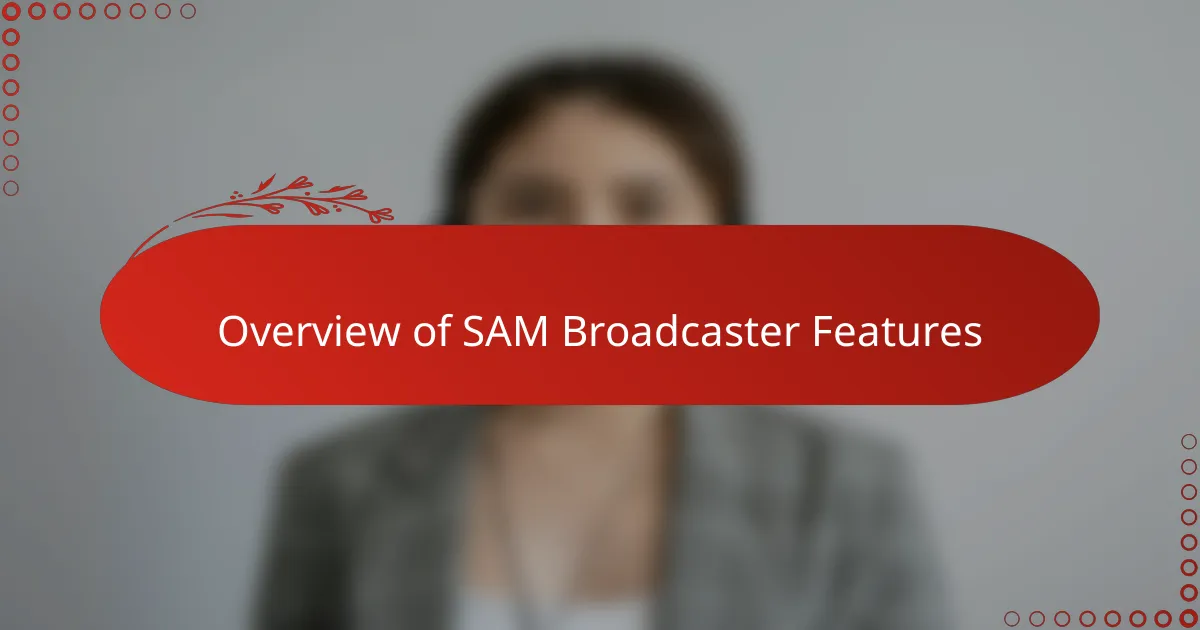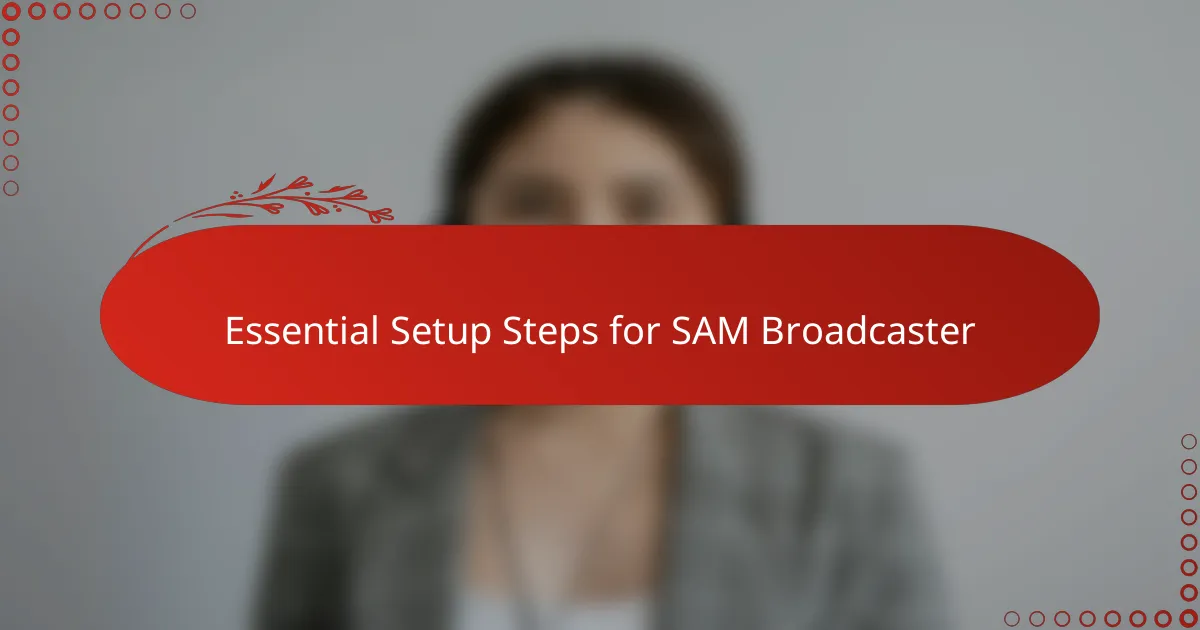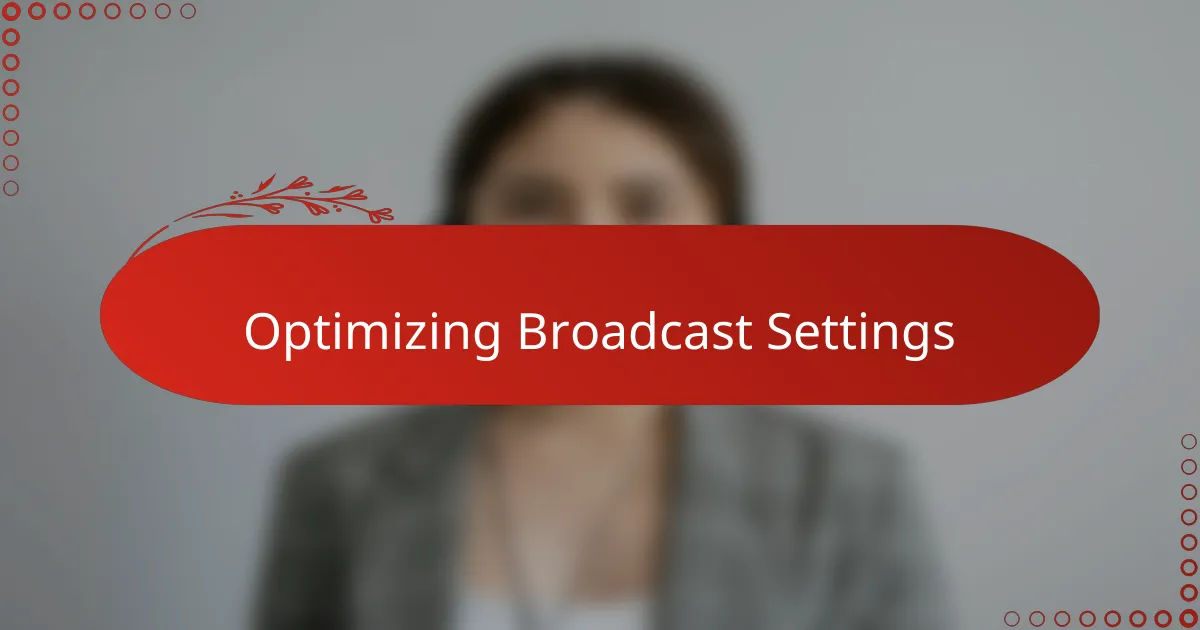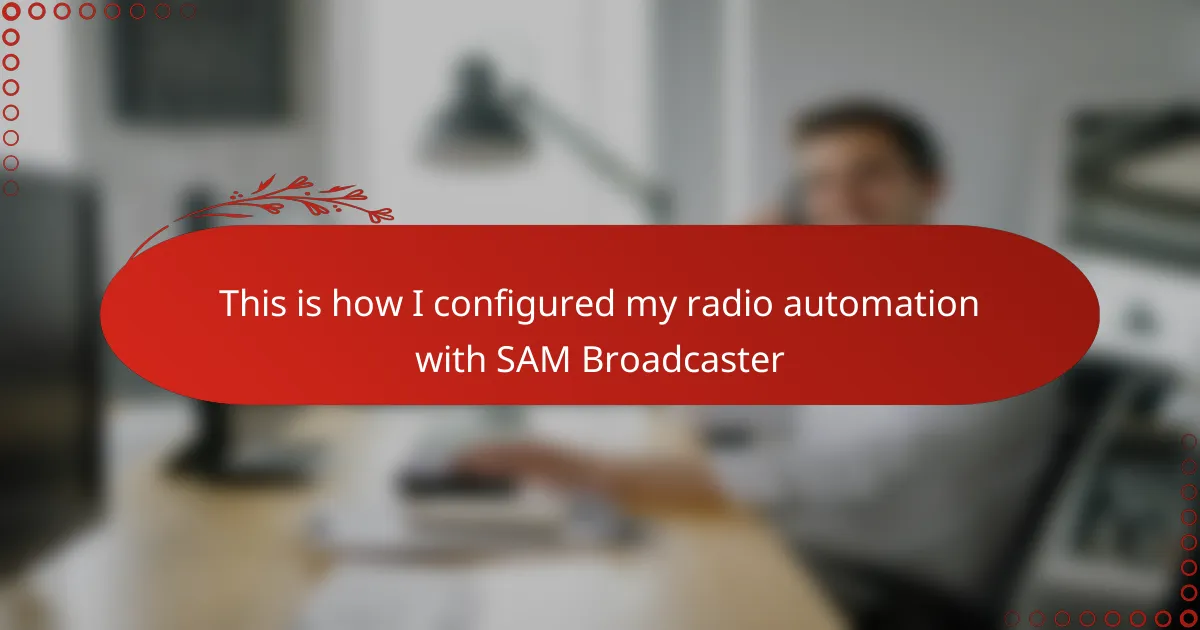Key takeaways
- Radio automation enhances broadcasting efficiency, allowing for smooth operations without constant manual control.
- SAM Broadcaster combines playlist management, scheduling, and live broadcasting, optimizing sound quality through automatic processing.
- Essential setup involves careful configuration of audio sources, playlists, and streaming settings to ensure a professional broadcast.
- Monitoring and optimizing broadcast settings are crucial for maintaining sound quality and ensuring reliable streaming for listeners.

Introduction to Radio Automation
Radio automation is a game-changer in broadcasting, allowing stations to run smoothly without someone needing to push a button every minute. I remember when I first explored automation—I was amazed at how it could keep my shows flowing seamlessly, even during late nights or busy days. Have you ever wondered how some stations manage to sound so polished around the clock? That’s the magic of automation at work.

Overview of SAM Broadcaster Features
SAM Broadcaster packs a lot into a single platform, blending playlist management, scheduling, and live broadcasting tools all in one. When I first navigated its interface, I appreciated how intuitive it felt, even with so many features at my fingertips. It made me wonder how I ever managed without such a streamlined setup.
One feature that stood out immediately was the real-time audio processing—things like compression and equalization happen automatically, which really lifted the overall sound quality. From my experience, this sort of polish can make the difference between a casual listen and keeping an audience hooked for hours.
Another part I find invaluable is the detailed reporting and listener statistics. It’s not just about playing music; it’s about understanding who’s tuning in and when. That insight helped me tweak my programming in ways that genuinely connected with my audience, making the whole effort feel much more rewarding.

Essential Setup Steps for SAM Broadcaster
Setting up SAM Broadcaster can feel overwhelming at first, but breaking it down into essential steps really helps. I started by connecting my audio sources—whether it was a microphone for live shows or pre-recorded tracks—and configuring the input devices correctly. Have you ever fumbled through sound settings only to realize a simple input mismatch was the culprit? That moment taught me the importance of double-checking every connection early on.
Next, I focused on building my playlists and scheduling them strategically. The scheduler lets you arrange your shows precisely, from timed music blocks to automated announcements. I recall how rewarding it felt when my carefully planned schedule played flawlessly overnight without a hitch; it’s like having a silent partner who never sleeps.
Lastly, I dove into the encoder setup and streaming configuration to get my broadcast live online. SAM Broadcaster’s clear interface made choosing my streaming server and setting bitrates straightforward. From my experience, spending extra time here ensures smooth delivery to listeners, which is the ultimate goal, right? Nothing beats the satisfaction of hearing your station go live perfectly the very first time.

Configuring Your Audio Sources
Configuring your audio sources in SAM Broadcaster is where the magic really begins. I remember my first time plugging in different inputs—microphones, line-ins, and even virtual sources—and watching how the software recognized each one. It felt like finally unlocking the toolkit needed for a truly dynamic broadcast.
One thing I quickly learned is how crucial it is to fine-tune input levels. Too low, and your voice gets lost; too high, and distortion sneaks in. Have you ever battled with that annoying crackle or uneven volume? Adjusting those gain controls made a world of difference for me, ensuring every segment sounded clean and professional.
SAM Broadcaster also lets you assign specific audio sources to different events or playlists, which I found incredibly useful. For example, routing a live microphone feed during an interview while automating background music elsewhere brought my shows to life in a way that felt truly seamless. This flexibility gave me the confidence to experiment and tailor each broadcast to my own style.

Creating and Managing Playlists
Creating and managing playlists in SAM Broadcaster became one of my favorite parts of setting up the automation. I started by organizing my tracks into themed playlists—like morning hits, chill vibes, and weekend party tunes—which made scheduling shows feel less like a chore and more like crafting a story. Don’t you love how having a clear playlist can turn a good broadcast into a memorable experience?
One feature that really won me over was the ability to easily drag and drop songs while also customizing rules for playback, like avoiding repeats within a certain timeframe. I remember the relief when my station stopped playing the same song twice in an hour, which had annoyed me in the past. That little touch of control made my playlists feel professional, yet flexible.
Managing playlists also involved regularly updating and curating content to keep things fresh. It’s easy to fall into the trap of letting playlists get stale, but SAM’s interface encouraged me to jump back in often. From my perspective, that ongoing attention is what stops a station from sounding robotic and instead keeps listeners coming back for more.

Optimizing Broadcast Settings
Optimizing broadcast settings in SAM Broadcaster was a turning point for me. I recall spending hours tweaking the encoder bitrate and balancing the audio processing tools like compression and equalization until the sound felt just right—clear without being harsh. Have you ever noticed how small adjustments can completely change the listener’s experience? That’s exactly what happened when I dialed in those settings carefully.
One trick I found helpful was to monitor the broadcast in real-time while making changes. Hearing my tweaks live showed me instantly whether the adjustments enhanced or hurt the signal’s quality. Trust me, there’s nothing more satisfying than knowing your station sounds great not just in theory, but on actual streams reaching your audience.
Another piece of advice I’d share is to avoid pushing bitrates too high, especially if your internet upload speed isn’t rock solid. It’s tempting to aim for the best quality possible, but I learned the hard way that smooth, uninterrupted streaming beats maximum fidelity every time. Balancing quality with reliability became my mantra, and it’s something every broadcaster should keep in mind.
